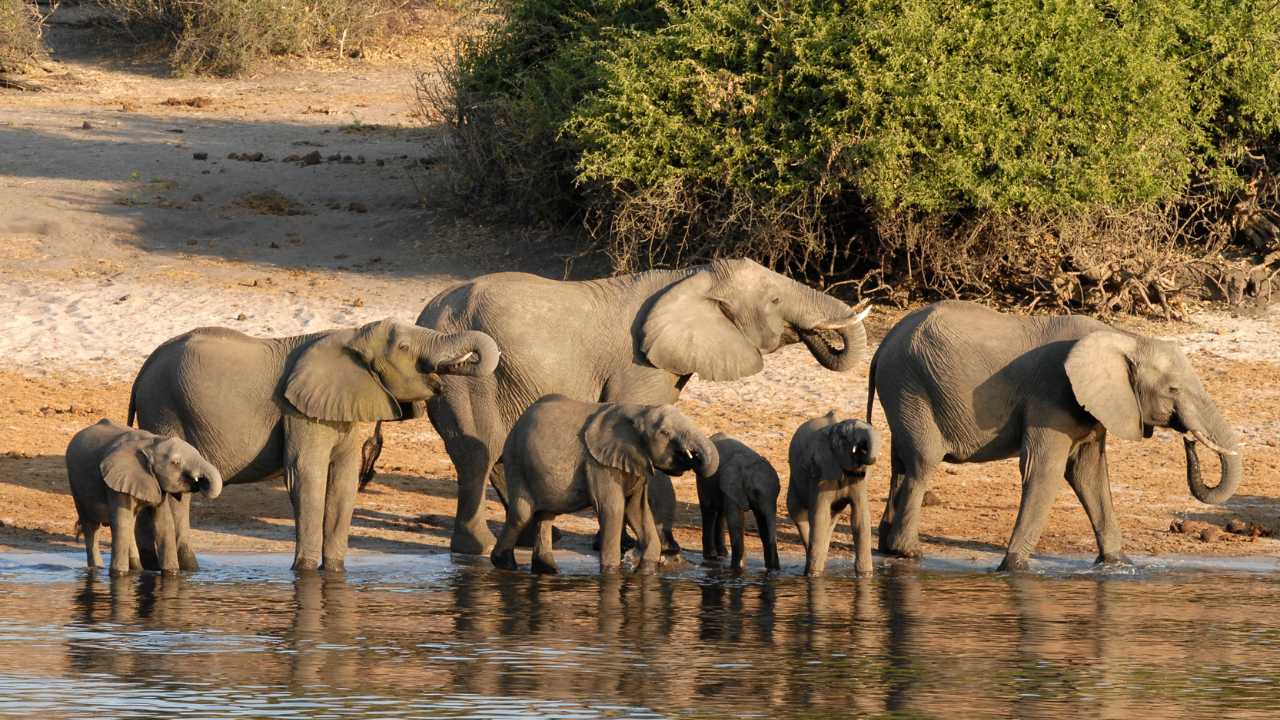
10 Tips For Your Self-Drive in Botswana
The dramatic experience of driving through the pristine wilderness of Botswana’s national parks and countryside can be awe-inspiring for you. Botswana has numerous wildlife species, and its stunning landscape can be alluring to all who love nature.
One of the ways to enjoy these views by taking a self-drive road trip in Botswana. Self-drive safaris come with their fair share of challenges, and you ought to be prepared well enough to make your road trip worthy.
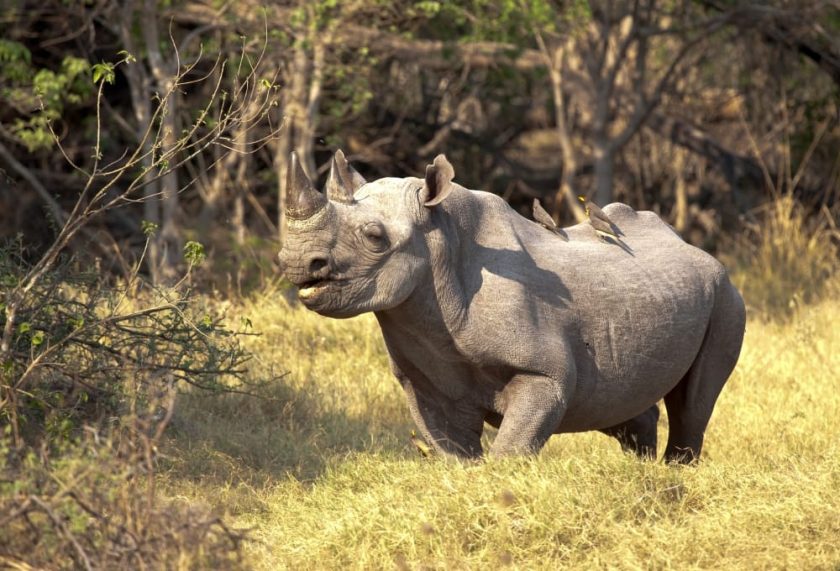
Above: Black rhino in Botswana.
Here are 10 things that you need to consider:
Ensure that you carry enough supplies
Most game parks lack refueling points. Therefore, it’s prudent to ensure that you have more fuel than you need. The extra fuel can be helpful if you run into emergencies. Also, take sufficient amounts of clean water for drinking, cooking, and washing.
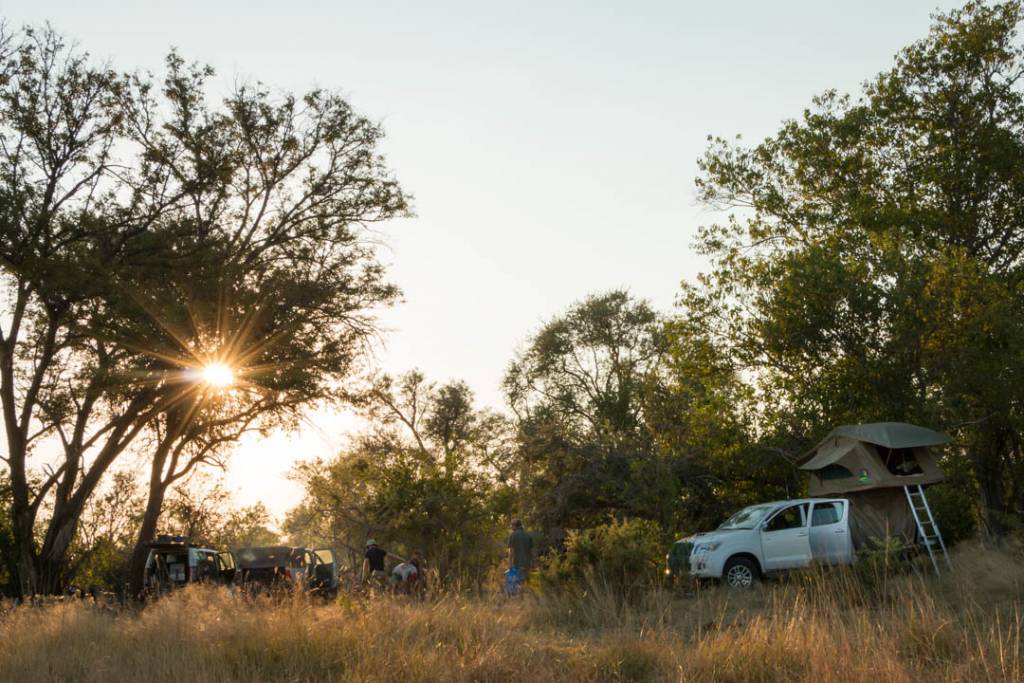
Above: 4×4 Tented rental at a campsite in Botswana.
If you’ll need to camp and make some campfire, make sure that you buy firewood before getting into the park because tourists are not allowed to collect wood in the parks. Finally, stock up on all essential food items, car repair tools, and a first aid kit.
Pick an all-weather vehicle for your road trip
The first thing you have to be aware of when on Botswana roads is that all vehicles are right-hand driven. Secondly, most countryside and park roads in the northern part of Botswana are sandy, muddy, and in bad condition, especially during the rainy seasons.
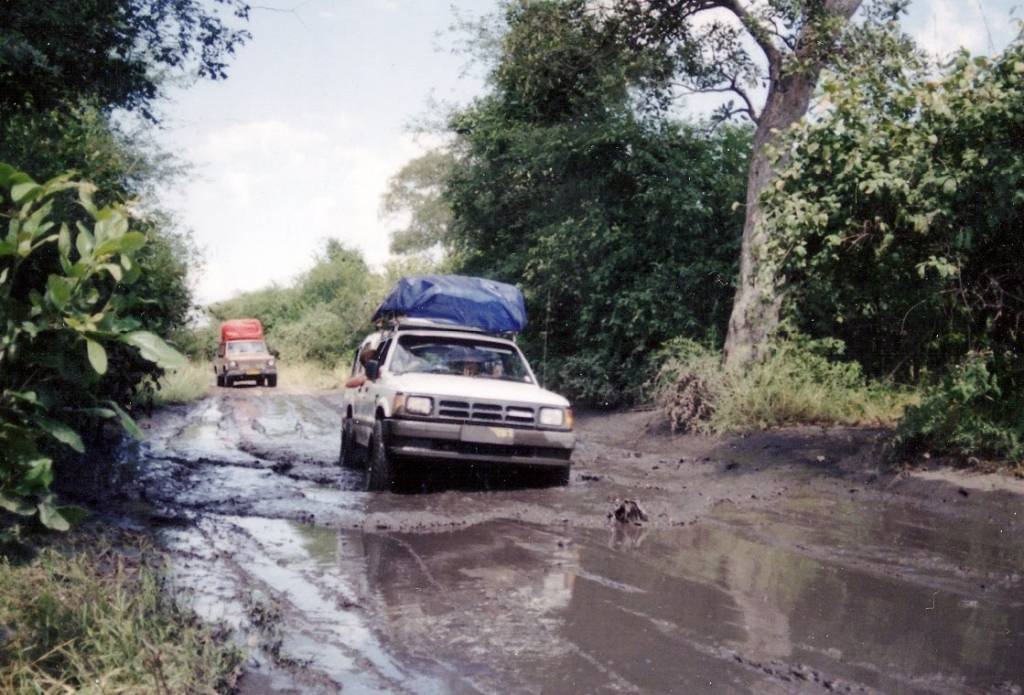
Above: Botswana roads in the rainy season.
These roads often have deep pools of water, slippery clay, and soft sand that could get your vehicle easily stuck. It is always advisable to use a 4×4-wheel-drive for your self-drive tours in Botswana.
Always keep on the designated roads and don’t veer off
Veering off from designated roads in the parks may lead you into dirt roads (which are often impassable), and you may get stuck. Since such roads are least used, it may become challenging for the park rangers to find you if you get lost.
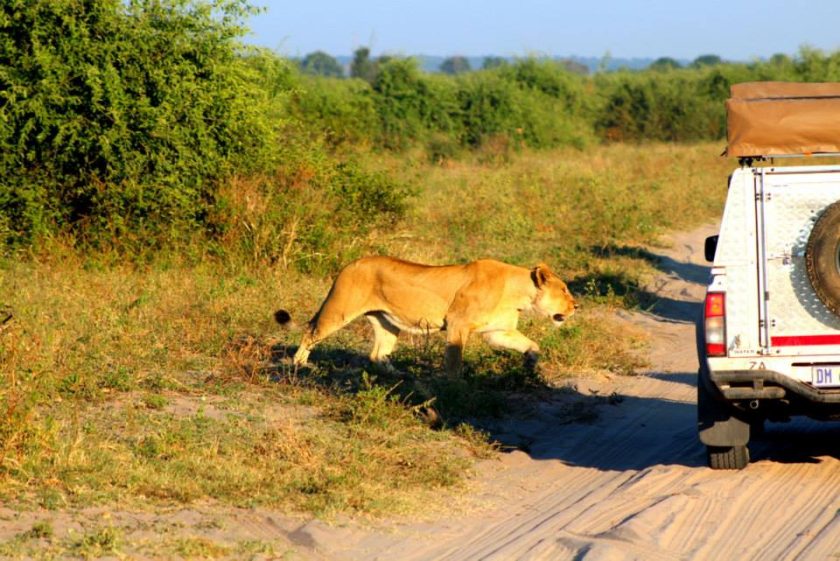
Above: Lion next to a 4×4 vehicle in Botswana.
In fact, off-road driving is not allowed in all of Botswana’s national parks. This measure is meant to preserve some parts of the park’s ecosystem by keeping them pristine.
Carry a map and a GPS gadget
Remember that you are on a self-drive trip, and you may not be in the company of a tour guide or a park ranger.
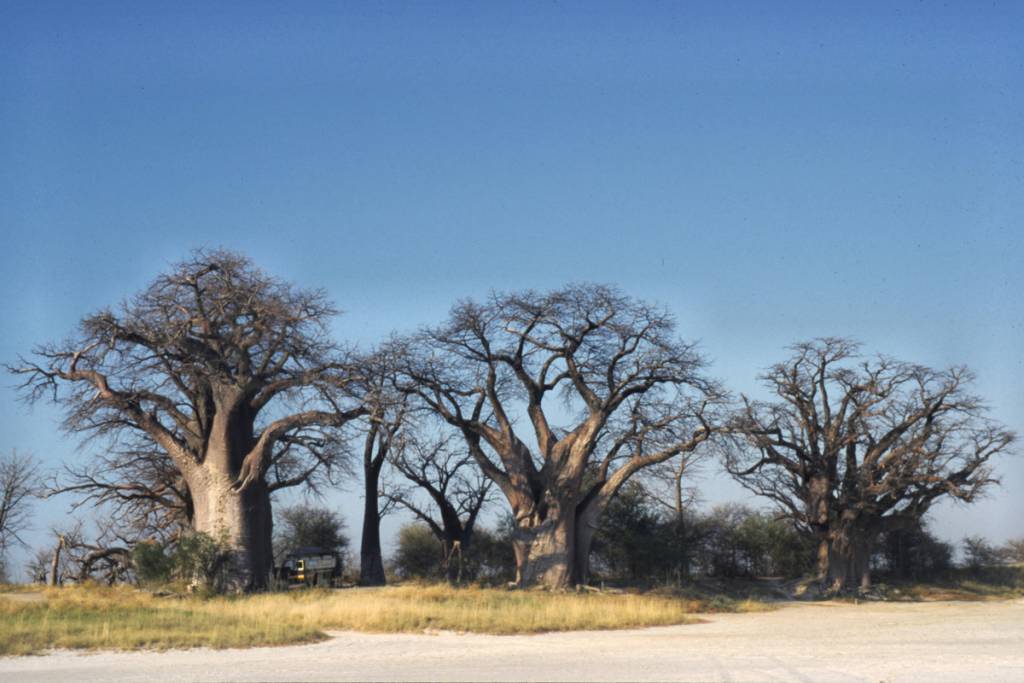
Above: Baynes Baobabs in Nxai Pan National Park, Botswana.
This implies that you will need a map and if possible, a GPS gadget that will help you in navigating through the park since most of the roads within the parks lack signposts to direct you.
Try off-season trips for cheaper rates
Are you hard-pressed on cash, but you want to make your road trip a success? One of the ingenious ways to have a cheap road trip is by travelling during the off-season.
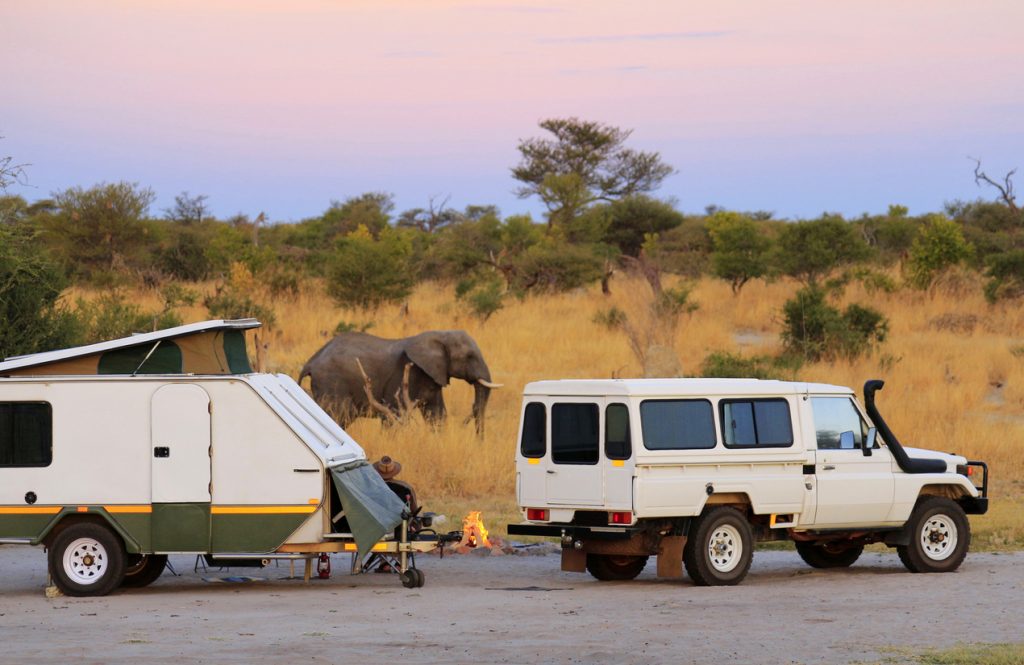
Above: Elephant sighting on a self-drive sfari in Botswana.
During these periods, there are few tourists, and this implies that lodge rates and other travel expenses are lower than the normal high-season rates.
Northern Botswana is a malaria-prone area
There is a relatively high risk of getting malaria in the northern parts of Botswana. The risk is even higher in the wet season, which occurs between November and April.
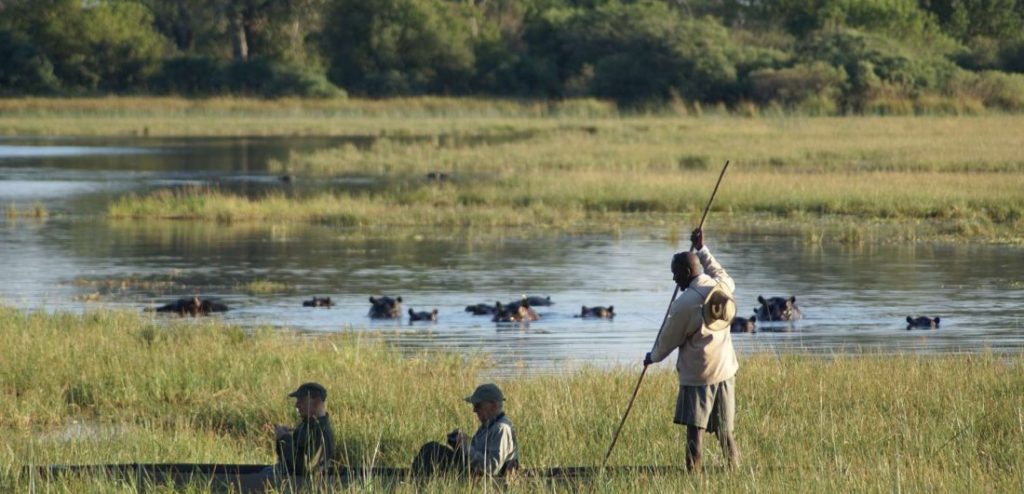
Above: Makoro in Botswana on the Okavango Delta.
Visitors are encouraged to use mosquito repellants, long-sleeved clothes, and mosquito nets while camping. Additionally, carry some anti-malarial tablets such as Malarone, Doxycycline, and atovaquone.
Carry a satellite phone if possible
Two-way radios are not allowed in the parks, and traditional mobile phones may fail to work when you’re out in the park because of poor network reception. As such, it’s advisable to carry a satellite phone for better communication.
Avoid walking alone in the park
Visitors are not allowed to wander away or walk in the park without the company of a ranger or tour guide. If you’re camping, don’t leave the vicinity of your camp. If on a driving trip, don’t leave your car, and always ensure that your doors and windows are well-secured.
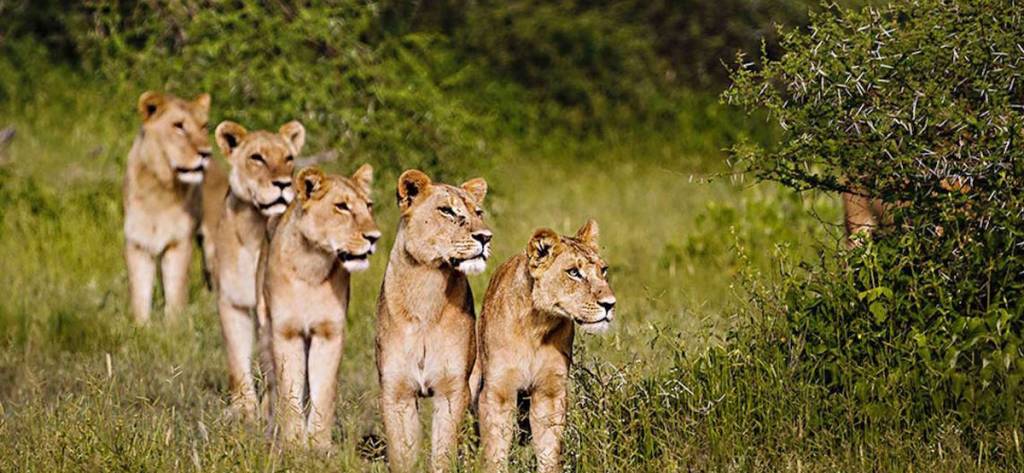
Above: Pride of lions in Botswana.
This is particularly important in the early mornings and in the evening when most animals are actively hunting.
Don’t carry prohibited items on your trip
The prevalence of conditions such as the foot-and-mouth disease, which affects wild animals, has led to the ban of items or products from animals, which may carry similar disease-causing pathogens.
Some of the banned items include fresh milk, game skins, and trophies as well as meat and meat products from hoofed animals.
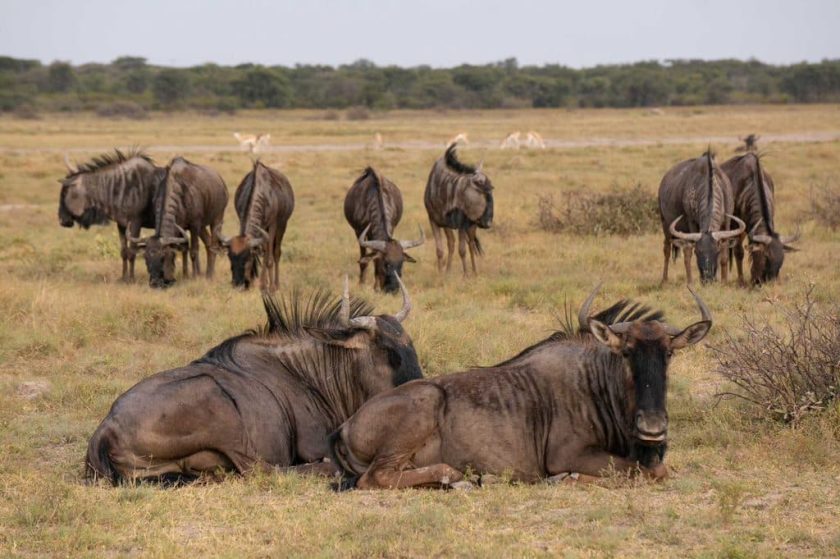
Above: Herd of wildebeest in Botswana.
Try to check the latest updates on such park regulations because there are many other banned items, which may include drones and other electronic devices.
Don’t give any food to the wild animals
Feeding wild animals makes them fond of humans, and driving away their natural fear may entice them to come closer to you. This poses a threat to you because the animals can inflict harm on you if they get irritated or feel threatened in any way.
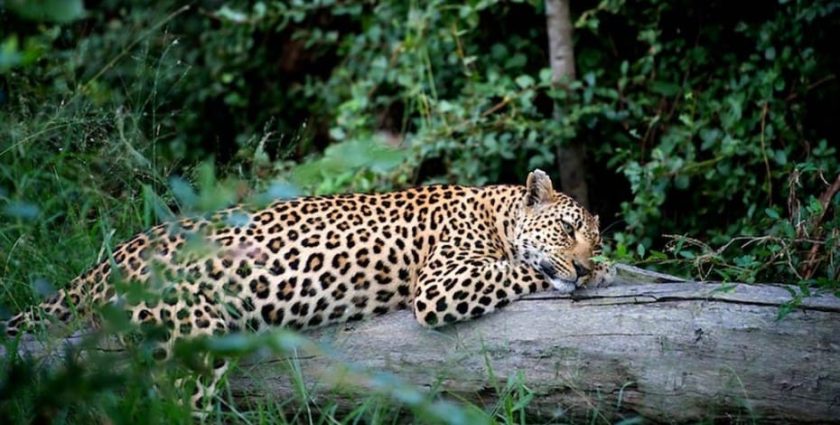
Above: Leopard sleeping on a log, Botswana | Photo credit: Chiefs camp
Also, don’t keep foodstuffs in your tent. Wild animals have a strong sense of smell, which may draw them into your tent. Instead, let all your food supplies remain in your vehicle.
Related Posts
MapStudio's Botswana Adventure Road Map [Map Review]
MapStudio's Botswana Adventure Road Map is the ideal travel companion for adventure travellers heading into one of the most prolific and diverse wildlife destinations in Africa.
Read MoreBotswana: National Parks, Game Reserves and Concessions
Like many first time safari-goers, you might have some questions about what the difference between game reserves, national parks, and concessions. We’re here to offer some clarity on how these designated areas differ, and what this means for your Botswana safari experience. National Parks vs Game Reserves The difference between these is quite straightforward. A […]
Read MoreTop 5 Botswana 4x4 Safari Experiences
Known as Africa's top wildlife destination, Botswana's safari's, tours and game reserves are a treat for all wildlife enthusiasts. Here are Drive South Africa's top Botswana Game Reserves in which to sample all that Botswana's incredible wildlife has to offer.
Read More Rating: 4 - 1562 Reviews
Rating: 4 - 1562 Reviews


